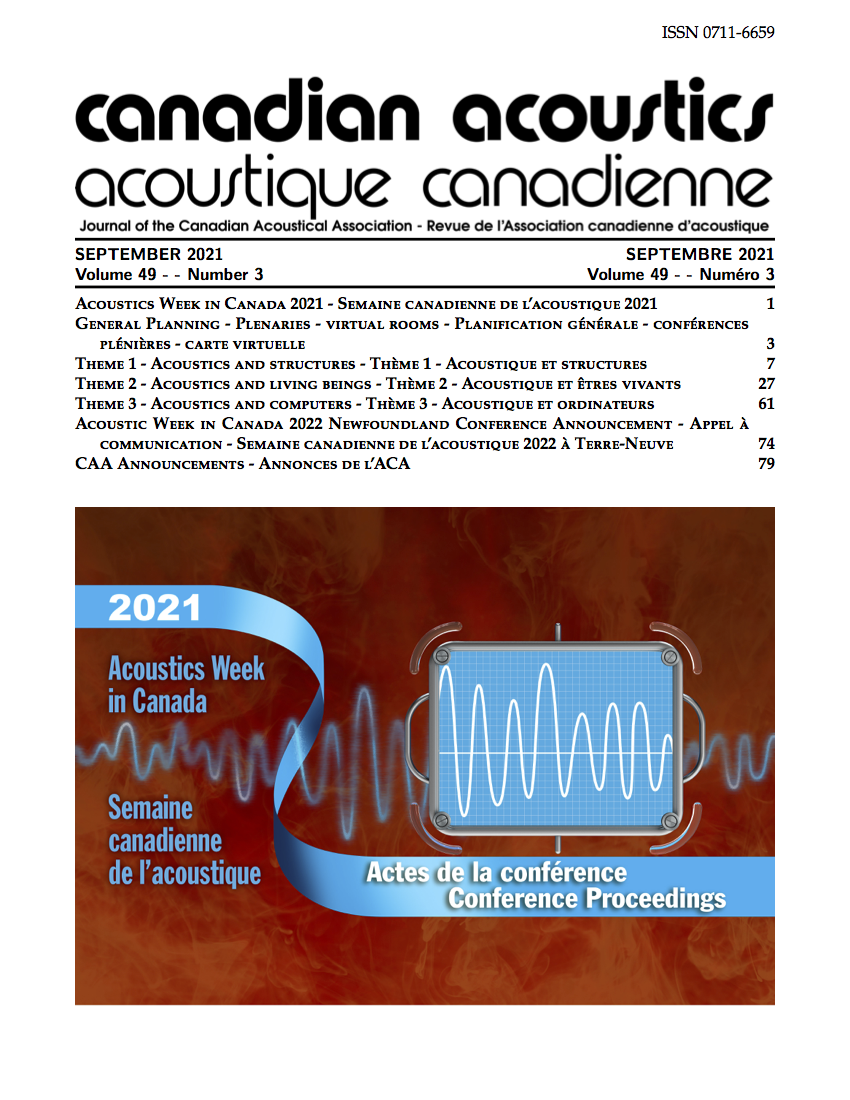Speaker Accommodations towards VUI Voices on the dimensions of Voice Onset Time and Pitch Range
Abstract
Previous research has found evidence of speech accommodation between human interlocutors [Lindblom, B. (1990). Speech Production and Speech Modeling] particularly in the dimensions of voice onset time (VOT) [Asano, Y., & Gubian, M. (2018). Speech Communication] and pitch range [Oviatt, S., Maceachern, M., & Levow, G.-A. (1998). Speech Communication]. With the growing presence and integration of voice user interfaces (VUI), inanimate devices which use human voices, the question arises of whether accommodation is present when the interlocutor is a VUI, and whether perceived animacy further influences this. Thirteen prompts were read by twenty-seven participants over Zoom who then heard synthetic speech responses from two voices believed to be active VUIs. These voices were produced using Amazon AWS Polly and differed in perceived animacy, a “human-like voice” and a “robotic voice” each manipulated to have shorter and longer VOT and different pitch range respectively. Pitch and VOT of the participants’ directives were analysed. Current findings suggest that participants do not accommodate VOTs to either voice, and that participants’ pitch patterns diverge from the VUIs pitch range. These preliminary results suggest that phonetic characteristics are employed differently in communication towards VUIs.Additional Files
Published
How to Cite
Issue
Section
License
Author Licensing Addendum
This Licensing Addendum ("Addendum") is entered into between the undersigned Author(s) and Canadian Acoustics journal published by the Canadian Acoustical Association (hereinafter referred to as the "Publisher"). The Author(s) and the Publisher agree as follows:
-
Retained Rights: The Author(s) retain(s) the following rights:
- The right to reproduce, distribute, and publicly display the Work on the Author's personal website or the website of the Author's institution.
- The right to use the Work in the Author's teaching activities and presentations.
- The right to include the Work in a compilation for the Author's personal use, not for sale.
-
Grant of License: The Author(s) grant(s) to the Publisher a worldwide exclusive license to publish, reproduce, distribute, and display the Work in Canadian Acoustics and any other formats and media deemed appropriate by the Publisher.
-
Attribution: The Publisher agrees to include proper attribution to the Author(s) in all publications and reproductions of the Work.
-
No Conflict: This Addendum is intended to be in harmony with, and not in conflict with, the terms and conditions of the original agreement entered into between the Author(s) and the Publisher.
-
Copyright Clause: Copyright on articles is held by the Author(s). The corresponding Author has the right to grant on behalf of all Authors and does grant on behalf of all Authors, a worldwide exclusive license to the Publisher and its licensees in perpetuity, in all forms, formats, and media (whether known now or created in the future), including but not limited to the rights to publish, reproduce, distribute, display, store, translate, create adaptations, reprints, include within collections, and create summaries, extracts, and/or abstracts of the Contribution.


